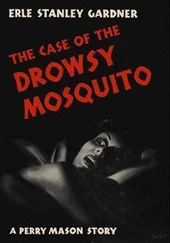Daniel Gardner - The Science of Fear
Здесь есть возможность читать онлайн «Daniel Gardner - The Science of Fear» весь текст электронной книги совершенно бесплатно (целиком полную версию без сокращений). В некоторых случаях можно слушать аудио, скачать через торрент в формате fb2 и присутствует краткое содержание. ISBN: , Издательство: Penguin Group (USA) Incorporated, Жанр: Психология, Политика, Прочая научная литература, на английском языке. Описание произведения, (предисловие) а так же отзывы посетителей доступны на портале библиотеки ЛибКат.
- Название:The Science of Fear
- Автор:
- Издательство:Penguin Group (USA) Incorporated
- Жанр:
- Год:неизвестен
- ISBN:9780525950622
- Рейтинг книги:3 / 5. Голосов: 1
-
Избранное:Добавить в избранное
- Отзывы:
-
Ваша оценка:
- 60
- 1
- 2
- 3
- 4
- 5
The Science of Fear: краткое содержание, описание и аннотация
Предлагаем к чтению аннотацию, описание, краткое содержание или предисловие (зависит от того, что написал сам автор книги «The Science of Fear»). Если вы не нашли необходимую информацию о книге — напишите в комментариях, мы постараемся отыскать её.
The Science of Fear — читать онлайн бесплатно полную книгу (весь текст) целиком
Ниже представлен текст книги, разбитый по страницам. Система сохранения места последней прочитанной страницы, позволяет с удобством читать онлайн бесплатно книгу «The Science of Fear», без необходимости каждый раз заново искать на чём Вы остановились. Поставьте закладку, и сможете в любой момент перейти на страницу, на которой закончили чтение.
Интервал:
Закладка:
3
The Death of Homo economicus
"Recent figures suggest some 50,000 pedophiles are prowling the Internet at any one time,” says the Web site of Innocents in Danger, a Swiss-based NGO. No source is cited for the claim, which appears under the headline "Some Terrifying Statistics.”
It is indeed a terrifying statistic. It is also well traveled. It has been sighted in Britain, Canada, the United States, and points beyond. Like a new strain of the flu virus, it has spread from newspaper articles to TV reports to public speakers, Web sites, blogs, and countless conversations of frightened parents. It even infected Alberto Gonzales, the former attorney general of the United States.
Unfortunately, the mere fact that a number has proliferated, even at the highest levels of officialdom, does not demonstrate the number is true. So what about this number? Is it credible?
There’s one obvious reason to be at least a little suspicious. It’s a round number. A very round number. It’s not 47,000, or 53,500. It is 50,000. And 50,000 is just the sort of perfectly round number people pluck out of the air when they make a wild guess.
And what method aside from wild guessing could one use to come up with the number of pedophiles online? Accurate counts of ordinary Internet users are tough enough. But pedophiles? Much as one may wish they were all identified and registered with the authorities, they aren’t, and they aren’t likely to be completely frank about their inclinations when a telephone surveyor calls to ask about online sexual habits.
Another reason for caution is the way this alleged fact changes from one telling to another. In Britain’s The Independent newspaper, an article stated there are “as many as” 50,000 pedophiles online. Other sources says there are precisely 50,000. A few claim “at least” 50,000.
There’s also variation in what those pedophiles are supposed to be up to. In some stories, the pedophiles are merely “online” and the reader is left to assume they are doing something other than getting the latest headlines or paying the water bill. Others say the pedophiles are “looking for children. ” In the most precise account, all 50,000 pedophiles are said to have “one goal in mind: to find a child, strike up a relationship, and eventually meet with the child.” This spectacular feat of mind reading can be found on the Web site of Spectorsoft, a company that sells frightened parents software that monitors their children’s online activities for the low cost of $99.95.
Then there’s the supposed arena in which those 50,000 pedophiles are said to be operating. In some versions, it’s 50,000 around the world, or on the whole of the Internet. But an American blogger narrowed that considerably: “50,000 pedophiles at any one time are on MySpace.com and other social networking sites looking for kids.” And a story in the magazine Dallas Child quotes two parent-activists—identified as “California’s Parents of the Year for 2001”—who say, “The Internet is a wonderful tool, but it can also be an evil one, especially sites like MySpace.com. At any one given time, 50,000 pedophiles are on the site.”
All this should have our inner skeptic ringing alarm bells. But there is a final, critical question that has to be answered before we can dismiss this number as junk: What is its source?
In most of the number’s appearances, no source is cited. The author simply uses the passive voice (“It is estimated that . . .”) to paper over this gaping hole. Another way to achieve the same effect—one used far too often in newspapers—is to simply quote an official who states the number as fact. The number then takes on the credibility of the official, even though the reader still doesn’t know the number’s source. After an article in the Ottawa Citizen repeated the 50,000 pedophiles figure within a quotation from Ian Wilms, the president of the Canadian Association of Police Boards, I called Wilms and asked where he got the number. It came up in a conversation with British police, he said. And no, he couldn’t be more precise.
Fortunately, there are several versions of the “50,000 pedophiles” story—including the article in The Independent —that do point to a source. They all say it comes from the Federal Bureau of Investigation. So I called the FBI. No, a spokesperson said, that’s not our number. We have no idea where it came from. And no, she said, the bureau doesn’t have its own estimate of the number of pedophiles online because that’s impossible to figure out.
Skepticism is rarely enough to finish off a dubious but useful number, however. In April 2006, U.S. Attorney General Alberto Gonzales gave a speech to the National Center for Missing and Exploited Children in which he said, “It is simply astonishing how many predators there are. . . . At any given time, 50,000 predators are on the Internet prowling for children.” The source of this figure, Gonzales said, was “the television program Dateline .”
The attorney general should listen to National Public Radio more often. When journalists from NPR asked Dateline to explain where they got this number, they were told by the show’s Chris Hansen that they had interviewed an expert and asked him whether this number that “keeps surfacing” is accurate. The expert replied, as paraphrased by Hansen: “I’ve heard it, but depending on how you define what is a predator, it could actually be a very low estimate.” Dateline took this as confirmation that the number is accurate and repeated it as unqualified fact on three different shows.
The expert Dateline spoke to was FBI agent Ken Lanning. When NPR asked Lanning about the magic number, he said, “I didn’t know where it came from. I couldn’t confirm it, but I couldn’t refute it, either, but I felt it was a fairly reasonable figure.” Lanning also noted a curious coincidence: 50,000 has made appearances as a key number in at least two previous panics in recent years. In the early 1980s, it was supposed to be the number of children kidnapped by strangers every year. At the end of the decade, it was the number of murders committed by Satanic cults. These claims, widely reported and believed at the time, were later revealed to be nothing more than hysterical guesses that became “fact” in the retelling.
Now, it may be that, as Lanning thinks, the 50,000 figure is close to the reality. But it may also be way off the mark. There may be five million pedophiles on the Internet at any given moment, or five hundred, or five. Nobodyreally knows. This number is, at best, a guess made by persons unknown.
I’ve taken the time to give this figure a thorough dissection because—as we will see later in the book—unreliable statistics are all too common in public discourse. And the influence of those numbers is not limited to the gullible. In fact, psychologists have demonstrated that even the toughest skeptics will find it difficult, or even impossible, to keep bogus statistics from worming into their brains and influencing their judgments.
The problem, as usual, lies in the division between Head and Gut. It’s Head that scoffs at the “50,000 pedophiles” figure. Gut isn’t so sure.
To illustrate, I’ll ask a question that may at first seem somewhat unrelated to the subject at hand: Was Gandhi older or younger than nine when he died? Of course, that’s a silly question. The answer is obvious. It is also irrelevant. Completely irrelevant. Please forget I asked.
Let’s move along to another question: How old was Gandhi when he died? Now, if you actually know how old Gandhi was when he died, you are excused from this exercise. Go get a cup of tea and come back in a few paragraphs. This question is for those who are uncertain and have to guess.
Читать дальшеИнтервал:
Закладка:
Похожие книги на «The Science of Fear»
Представляем Вашему вниманию похожие книги на «The Science of Fear» списком для выбора. Мы отобрали схожую по названию и смыслу литературу в надежде предоставить читателям больше вариантов отыскать новые, интересные, ещё непрочитанные произведения.
Обсуждение, отзывы о книге «The Science of Fear» и просто собственные мнения читателей. Оставьте ваши комментарии, напишите, что Вы думаете о произведении, его смысле или главных героях. Укажите что конкретно понравилось, а что нет, и почему Вы так считаете.












